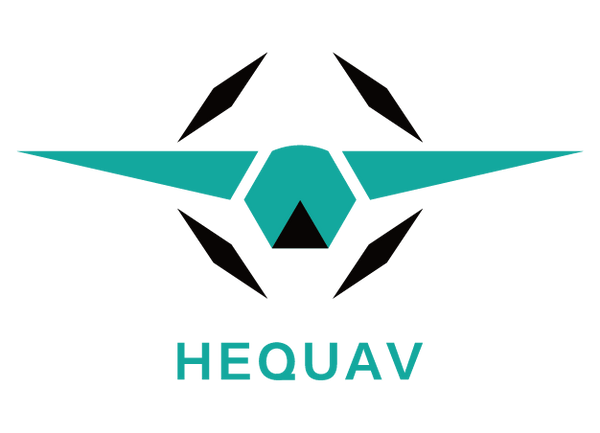Vertical Takeoff and Landing Unmanned Aerial Vehicles (VTOL UAVs) represent a significant innovation in the field of drone technology. They combine the advantages of vertical takeoff and landing with fixed-wing flight, providing efficient, flexible, and multifunctional solutions for various application domains.
Background Information:
The development history of VTOL UAVs can be traced back to the 1950s when they were initially used for military applications. They operate by utilizing vertical takeoff and landing engines or rotors to achieve vertical takeoff and then transition to horizontal flight mode for increased speed and efficiency. This design gives VTOL UAVs unique advantages, making them suitable for various missions.
- Analysis of VTOL UAV Advantages:
Flexibility and Applicability:
VTOL UAVs do not require long runways or specific takeoff and landing areas and can take off and land in confined spaces. This makes them suitable for urban, mountainous, densely forested, and maritime environments where rotorcraft and fixed-wing UAVs often require larger takeoff and landing areas.
Multifunctionality:
VTOL UAVs combine the characteristics of rotorcraft and fixed-wing UAVs. They can switch between vertical takeoff and landing and horizontal flight, offering excellent maneuverability for various tasks and environments.
Endurance and Speed Balance:
Some VTOL UAVs can extend their endurance by flying in horizontal flight mode, typically achieving longer endurance compared to rotorcraft UAVs. Moreover, they can fly at high speeds similar to fixed-wing UAVs, excelling in missions that require covering large areas.
Operational Costs:
VTOL UAVs generally require fewer ground equipment and manpower resources for takeoff and landing, reducing operational costs compared to some rotorcraft and fixed-wing UAVs.
Safety:
VTOL UAVs often have easier takeoff and landing procedures without the need for long runways or landing zones. This can provide safer operations in certain situations, which is crucial for tasks like emergency response and medical supply transport. Additionally, as they do not carry human pilots, VTOL UAVs can perform missions in hazardous or hostile environments without putting personnel at risk.
Mission Versatility:
Thanks to their multifunctionality, VTOL UAVs can perform various types of missions, including reconnaissance, monitoring, military support, cargo transport, power line inspections, and agricultural operations. This versatility makes them suitable for different industries and application domains.
Infrastructure Independence:
VTOL UAVs do not depend on complex infrastructure like traditional aircraft, allowing them to operate in areas with limited or damaged facilities. This makes them well-suited for remote areas, disaster scenes, or rapid deployment scenarios.
Environmental Friendliness:
Some VTOL UAVs use electric or hybrid power systems, resulting in lower noise and pollution levels during operation, making them more environmentally friendly.
Autonomy and Automation:
VTOL UAVs typically feature advanced autonomous flight systems and automation capabilities, enabling them to execute missions with minimal human intervention or remote control.
- Introduction to VTOL Fixed-Wing UAVs:
Today, some drone companies have developed VTOL fixed-wing UAVs. These UAVs combine the advantages of vertical takeoff and landing with horizontal flight, offering flexibility, long endurance, and multifunctionality suitable for complex missions and environments. This type of UAV holds significant potential in future drone technology and applications.

Balancing Flexibility and Efficiency:
VTOL fixed-wing UAVs strike a balance between flexibility and efficiency. They can vertically take off and land in limited spaces, similar to VTOL UAVs, while achieving high speeds during horizontal flight, like traditional fixed-wing UAVs. This unique feature makes them excel in tasks that require frequent transitions between vertical takeoff and landing and long-distance cruising, offering both operational flexibility and efficiency.
Extended Endurance:
VTOL fixed-wing UAVs generally have longer endurance than pure VTOL UAVs. This is because they can more effectively utilize energy during horizontal flight, extending mission durations. Extended endurance is crucial for tasks involving prolonged aerial surveillance, search and rescue, border patrols, and extensive area surveys. The long endurance of VTOL fixed-wing UAVs results in fewer returns to base and downtime for recharging, increasing mission efficiency and coverage.
Coverage Range:
Thanks to their ability to fly in horizontal flight mode, VTOL fixed-wing UAVs can cover vast areas and rapidly reach distant targets. This makes them highly valuable for missions such as search and rescue, surveillance, and patrols, allowing for faster and more effective responses to emergencies or monitoring of extensive regions. Whether it's frontline patrols in military applications or remote monitoring in civilian contexts, the coverage range of VTOL fixed-wing UAVs is critical for mission success.
Multifunctionality:
VTOL fixed-wing UAVs offer multifunctionality, capable of performing various types of tasks. They can be used for reconnaissance, monitoring, military support, cargo transport, medical supply delivery, and applications across different industries. This versatility positions them as a valuable choice for various missions, offering users flexibility and diversity.
Minimal Infrastructure Requirements:
Compared to traditional aircraft, VTOL fixed-wing UAVs do not require long runways or complex landing zones, providing greater operational flexibility. They can operate in small or airstrip-less areas, making them suitable for remote locations, disaster scenes, or scenarios that require rapid deployment. This feature reduces infrastructure demands, expands mission execution options, and lowers mission time and costs.
Operational Costs:
VTOL fixed-wing UAVs typically have lower operational costs, including fuel, ground crew, and maintenance, compared to some large fixed-wing aircraft.
Conclusion:
VTOL UAVs and VTOL fixed-wing UAVs represent the future trends in drone technology, offering remarkable flexibility, efficiency, and multifunctionality. They find wide applications in military, civilian, emergency response, logistics, and other fields, continuing to drive the development of drone technology and playing a pivotal role in the future drone.

